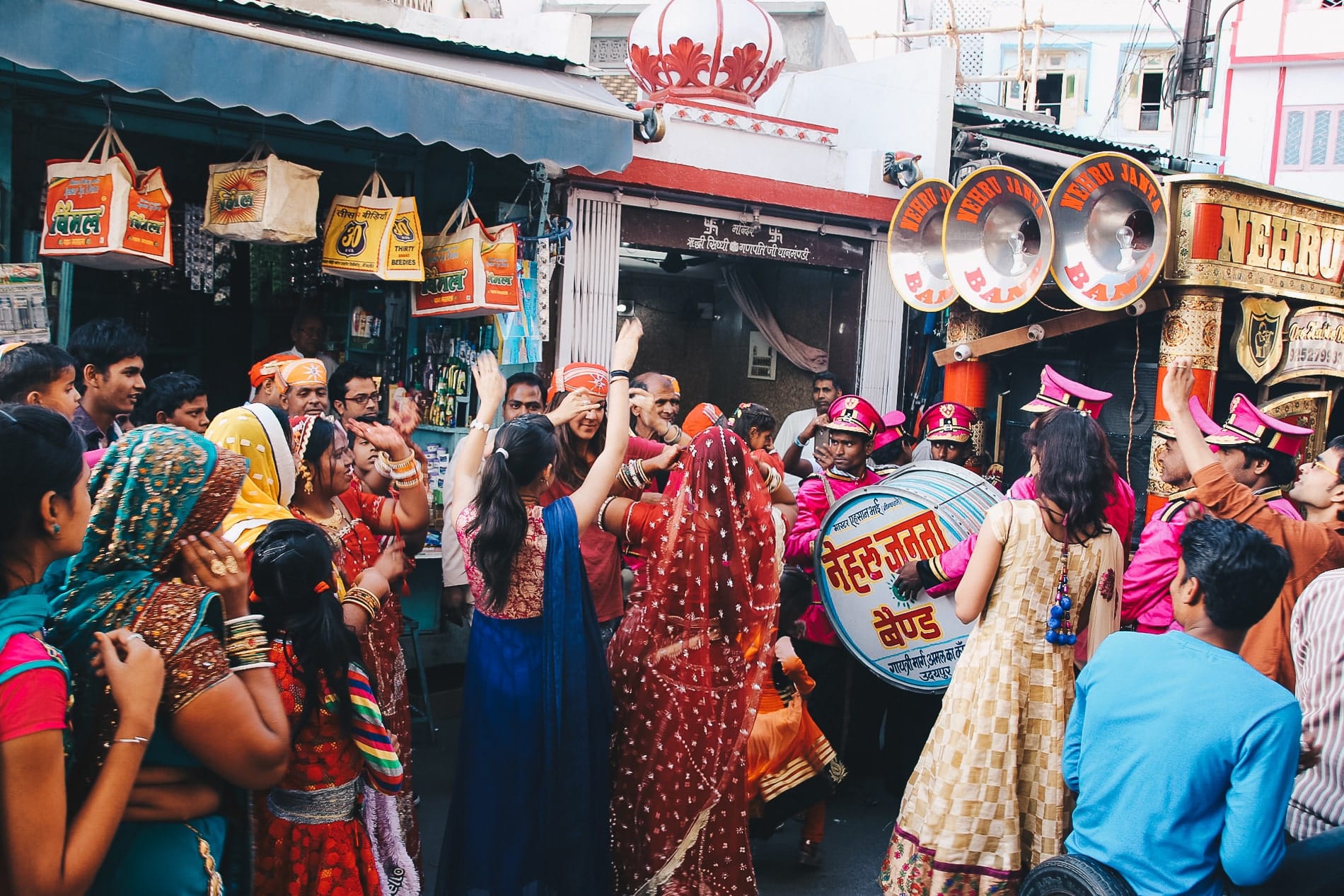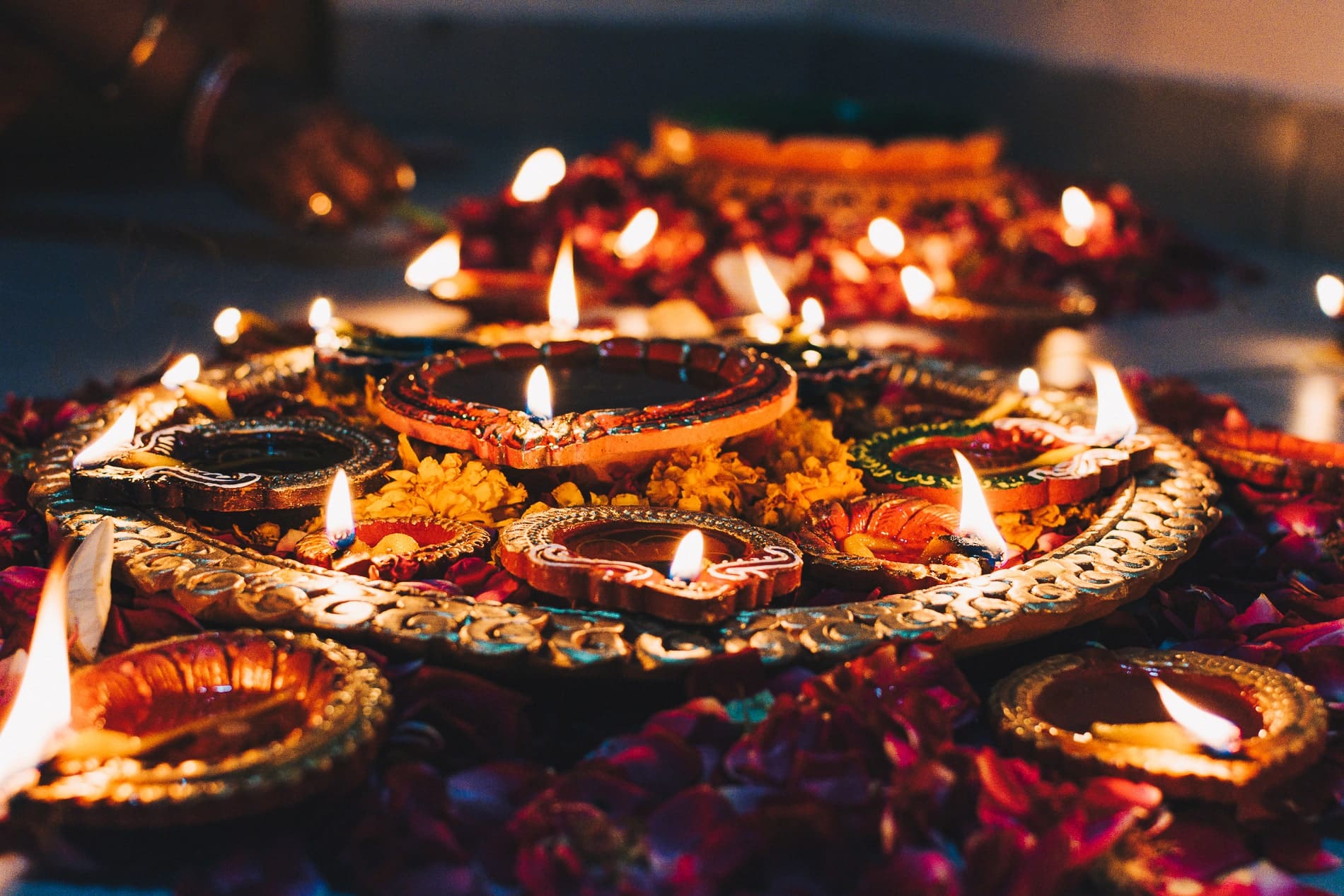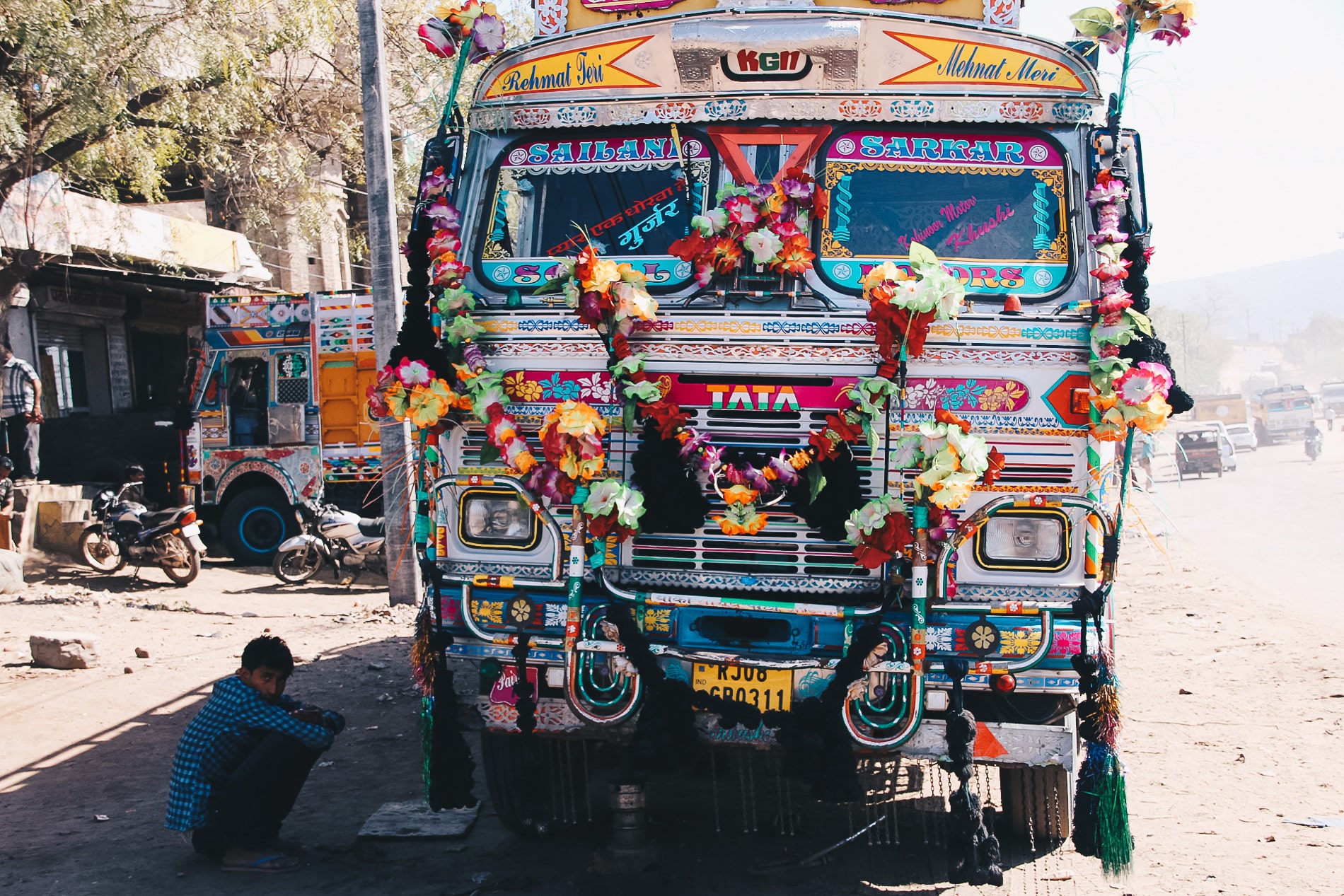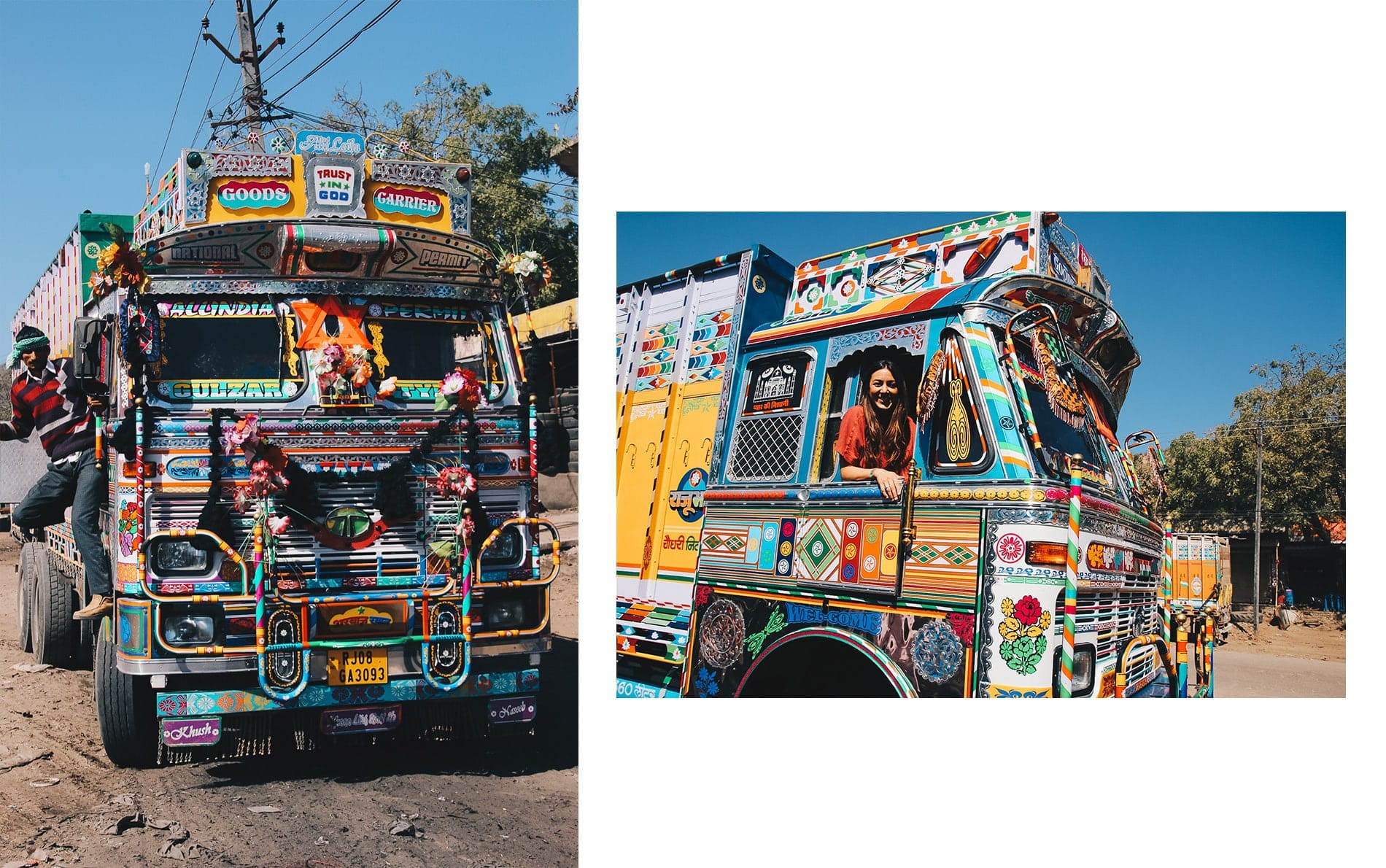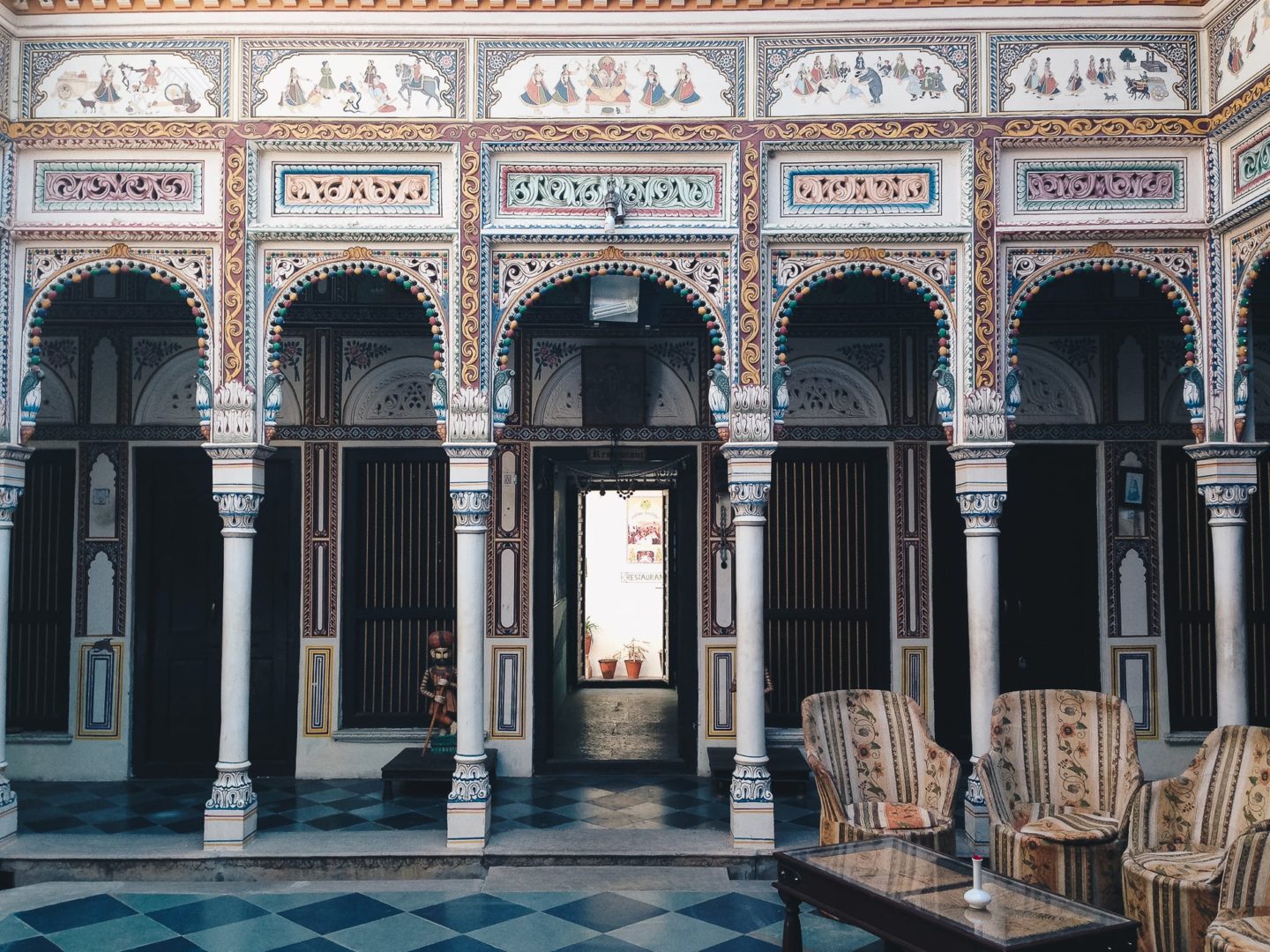
A trip to North India, to the land of the Rajputs, is sure to leave a lasting impression! Discover our reviews and impressions of Rajasthan.
We’d often heard that you either loved India or hated it, or so we were told over and over again! For us, this was not the case. At the time, we neither hated nor loved it. It’s taken us a while to give our impressions of this trip, but we simply loved it, even adored it, we can say today. That’s why we’re sharing our impressions of this fabulous region, from a Westerner’s point of view!
I invite you to read all our other articles on Rajasthan to help you prepare for your trip:
- Our 19-day North India tour
- Where to celebrate the Holi Festival in India?
- Meet the Bengal tiger
- What to bring back as souvenirs from Rajasthan
- Our practical guides and tips for preparing your trip to India
- Tasting goat masala at a local restaurant
India is the antithesis of what we’ve seen before, a disconcerting, fascinating, astonishing and noisy country! It’s not for nothing that she’s nicknamed « Incredible India ». It’s best to be well prepared and organized before setting off to discover this immense country of multiple contrasts, and to avoid the India syndrome.
We’d often heard things about India: that it was dirty and polluted, overpopulated, extremely poor, dangerous for women because of the many rapes, and so on. Many travelers have returned home shocked by this country. India is not necessarily the country I would recommend for a first trip, as the culture shock can be violent for some.
We remember well our first arrival on Indian soil, in Delhi. As soon as we left the airport, we were in the mood. From the window of our car, we observed this incessant and atypical din: horns honking, passers-by, cars, bicycles, beggars, tuk tuk drivers, rather calm and unafraid cows cohabiting together on the road. Everyone brushes up against each other without getting run over – that’s India for you! I’m not talking about our first day on foot, where you relive the same thing, adding the solicitations of street vendors, the smells of stalls, open drains and mountains of garbage. India is the land of all anomalies, where you sometimes feel as if you’re still in the Middle Ages, but you can hear cell phones ringing in the crowd. But let’s start by listing the different aspects of the country.
| POSITIVE ASPECTS OF RAJASTHAN
India and the Rajasthan region is first and foremost a cultural destination. Rajasthan is rooted in religious beliefs with Muslim, Jainist but especially Hinduism. Many of the temples here are dedicated to Hinduism, more or less outlandish to our Western eyes, but sure to delight. All these religious beliefs and ceremonies (songs, parades, flower offerings, incense…) were particularly appealing to us visually.
The country has been independent since 1947 and was previously ruled by Rajput families. (« son of prince” from raja, prince, and putra meaning son). Visiting this region means discovering its past, with its many Palaces, Forts and Havelis. Most of these buildings, especially the more recent ones, contain real artistic treasures, with miniatures (highly detailed painting techniques) adorning the walls of these palaces, as well as doors, sculptures, numerous antique objects and, of course, the architecture of the buildings. You can see all these palaces by visiting them, or by staying there.
-
HOTELS IN NORTH INDIA
Rajasthan boasts some magnificent authentic hotels that are representative of Indian architecture. Many Maharaja families turned to tourism around the time of independence (July 15, 1947) to earn income and maintain their palaces. That’s why the Rajasthan offers beautiful, charming and often very authentic hotels for reasonable prices (around €40 to €60 a night for the most upmarket, apart from the luxury hotels of course). You can stay in Palaces, Forts, Heritage Hotels or elegant Havelis reminiscent of Moroccan Riads. Real moments of pleasure where you’ll feel like a Maharaja or Maharani.
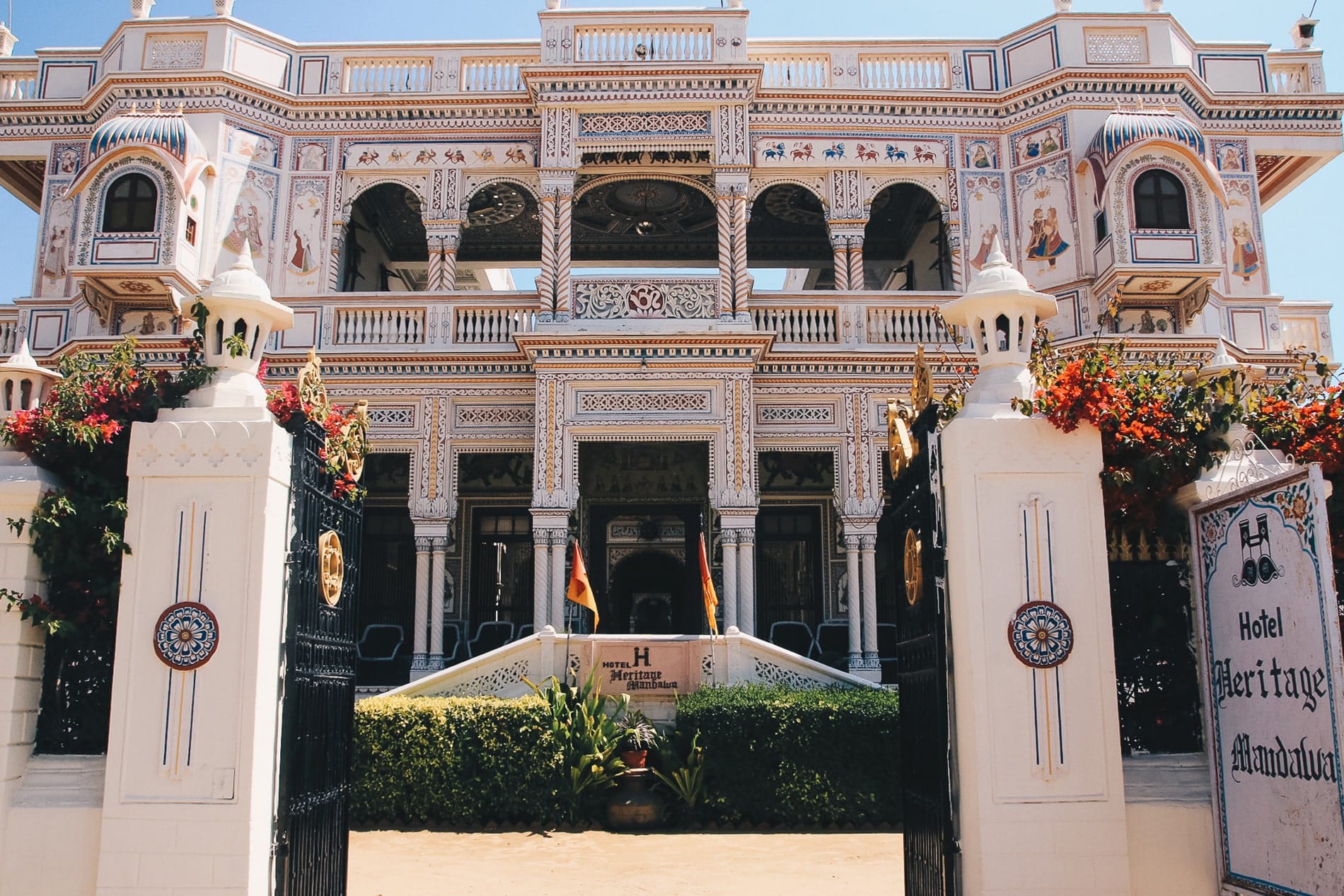
-
THE KITCHEN
Indian cuisine is really very good and rich (especially in oil!) but you have to love spices, tea and vegetables. In fact, the majority of North Indians are vegetarians, while the rest eat very little meat. (mainly chicken and goat, twice a week). As you stroll through the streets, the scent of cardamoms titillates your nostrils. Merchants sell a wide range of vegetables, some of which you know and some of which you don’t use. Hospitality is always a must, and the Indians are quick to offer you the famous thé Masala when you stop in any store. A real moment of conviviality and exchange with the locals!
Let yourself be tempted by the charms of Paneer, from Masala Papad (a puffed cumin patty with onions, crushed tomatoes and coriander on top), and Dal fry (lentil soup), Tandoori chicken accompanied by fragrant rice and Chapatis/Rotis hot off the press. If you’re afraid of spices, Indians are very good at dosing more “wisely” if you ask them, but don’t forget to taste it with your fingers, as this is the best way to immediately feel like you’re on a journey and appreciate the flavors.
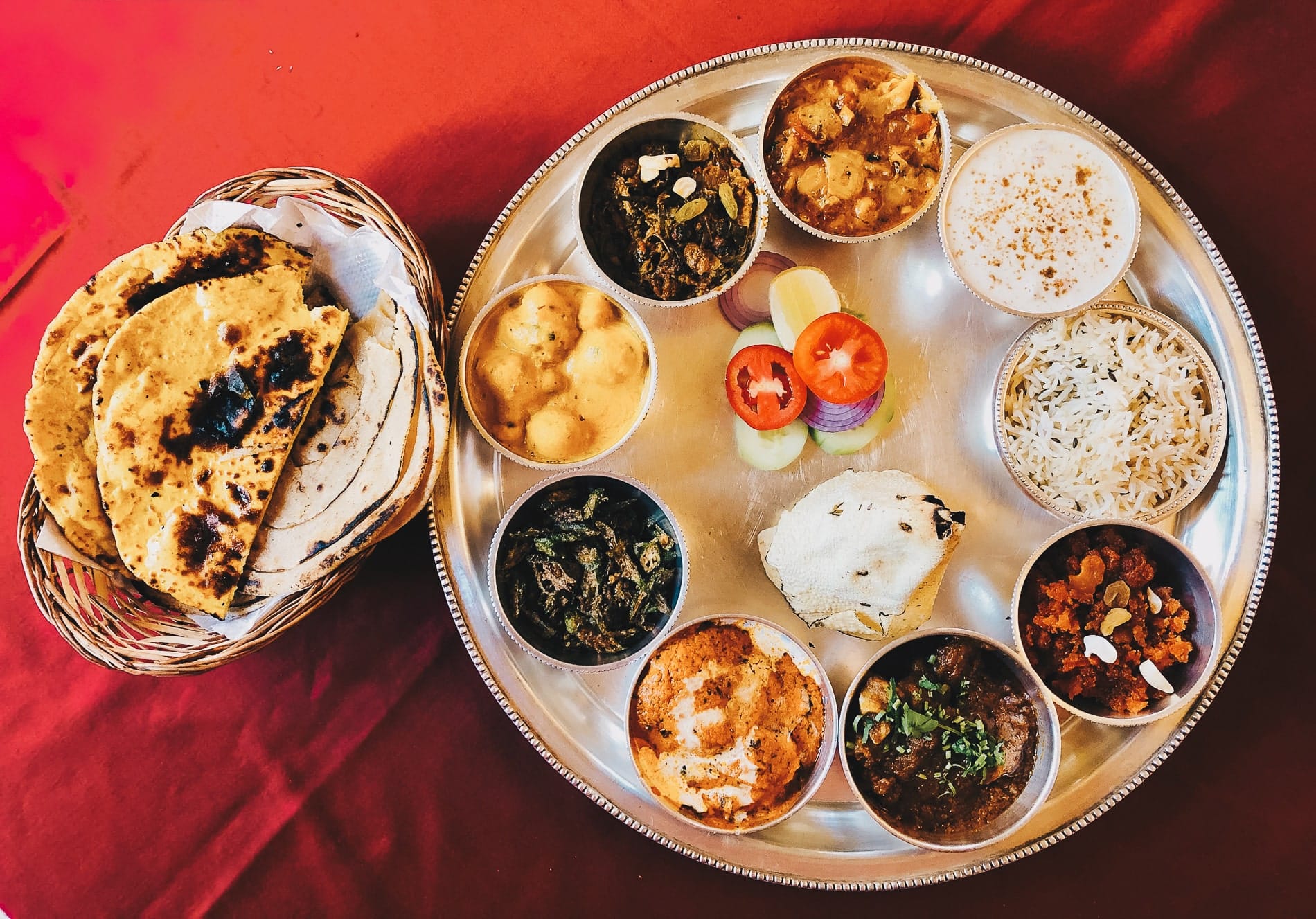
-
MEMORIES
You’ll have plenty to take home in terms of souvenirs! The country offers a wide variety of souvenirs, from the simplest to the most elaborate. You’ll find cashmere fabric, wall hangings, leather handbags adorned with handmade patchwork, as well as jewelry with semi-precious stones, silver, spices and a number of second-hand pieces for “salvage” lovers. And of course many miniatures and statuettes of Hindu gods and goddesses. We invite you to read our article on Rajasthan souvenirs.
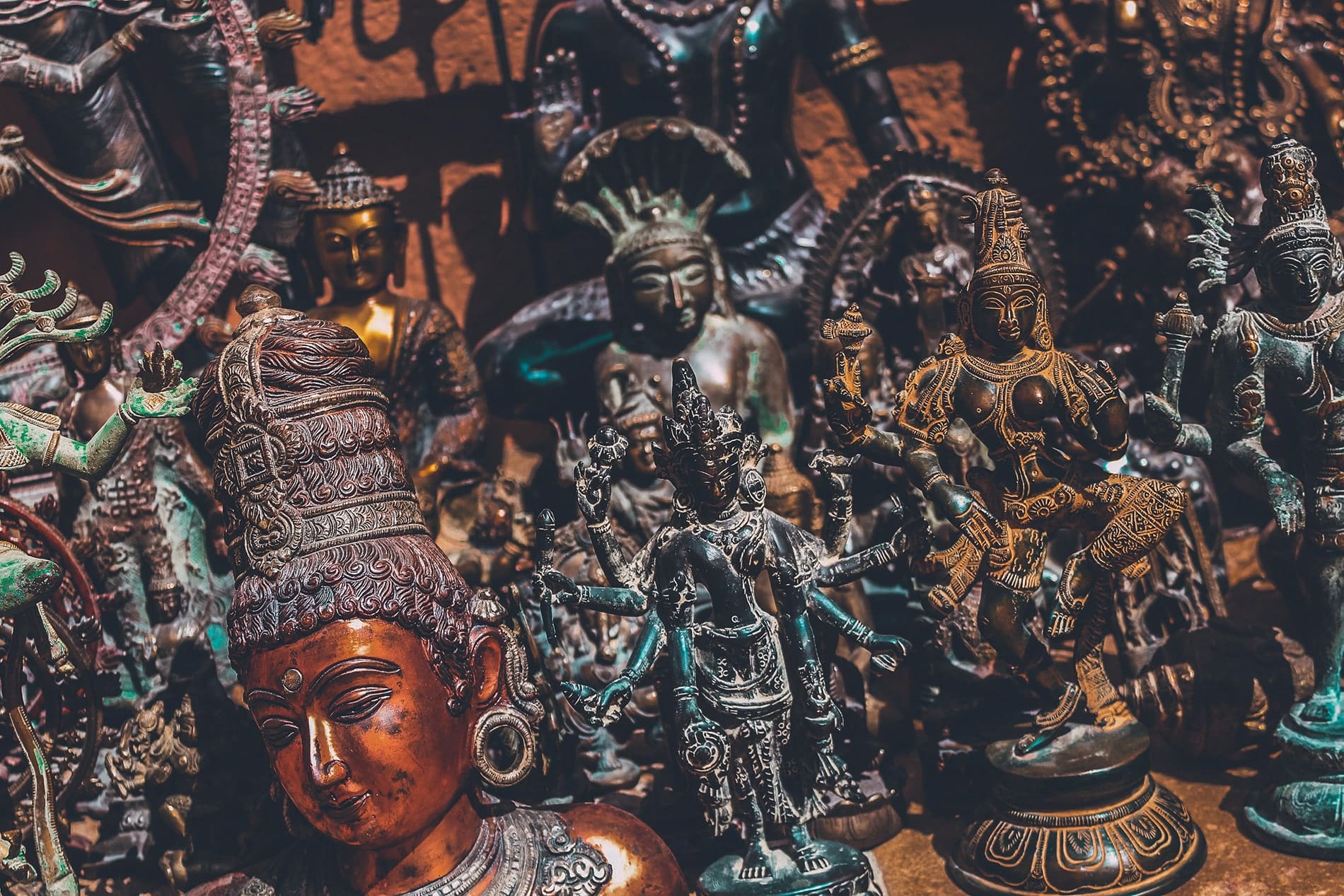
-
SCENES OF COUNTRY AND CITY LIFE
The countryside is authentic, and you can observe scenes of life that could be compared with France 100 years ago (which is not to say that India is a century behind.) You can also see it everywhere in the streets: fruit and vegetable traders, spice merchants, gargotes for lunch or a drink. It’s more charming when it’s on wheels. For photo lovers, you’re in for a treat.
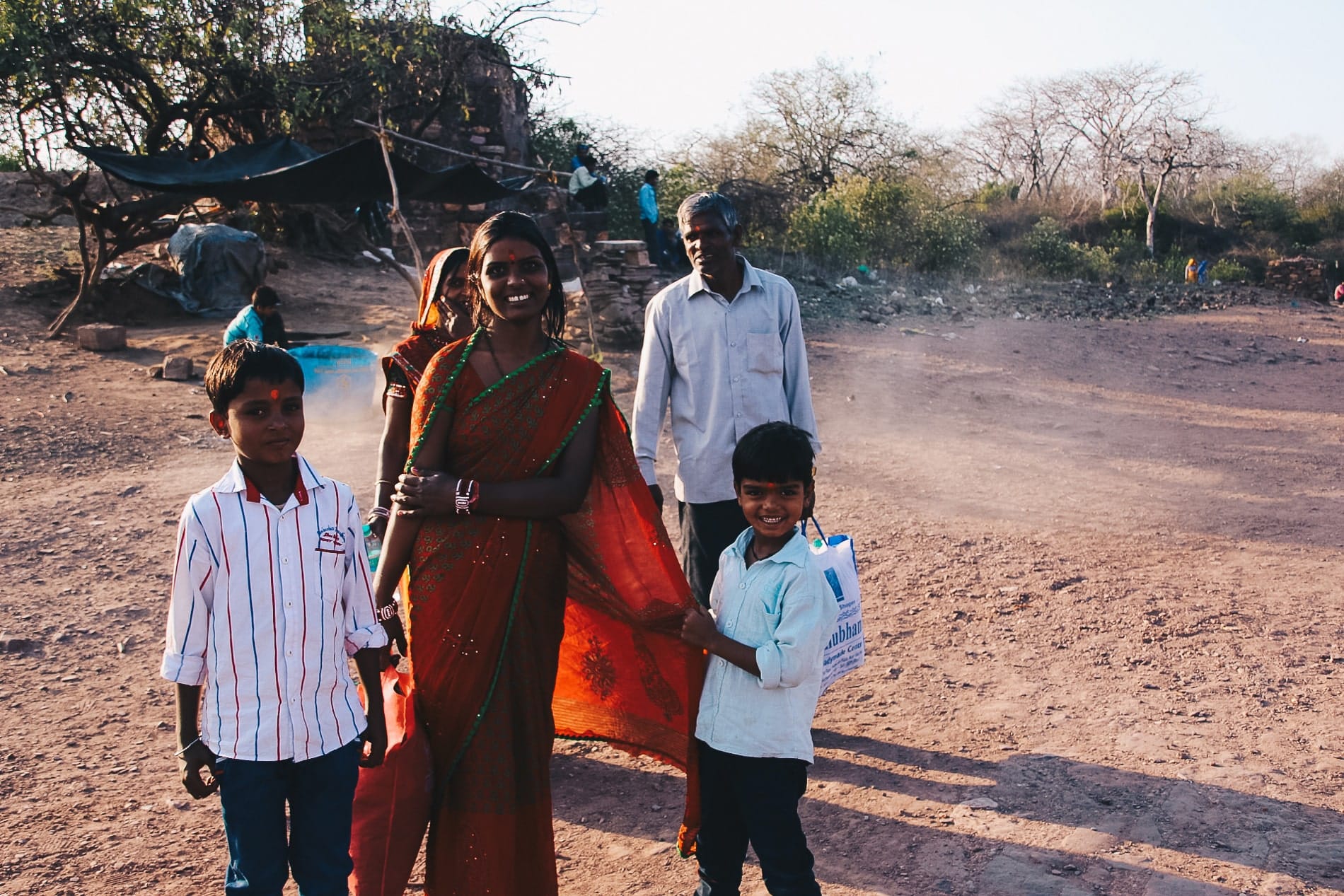
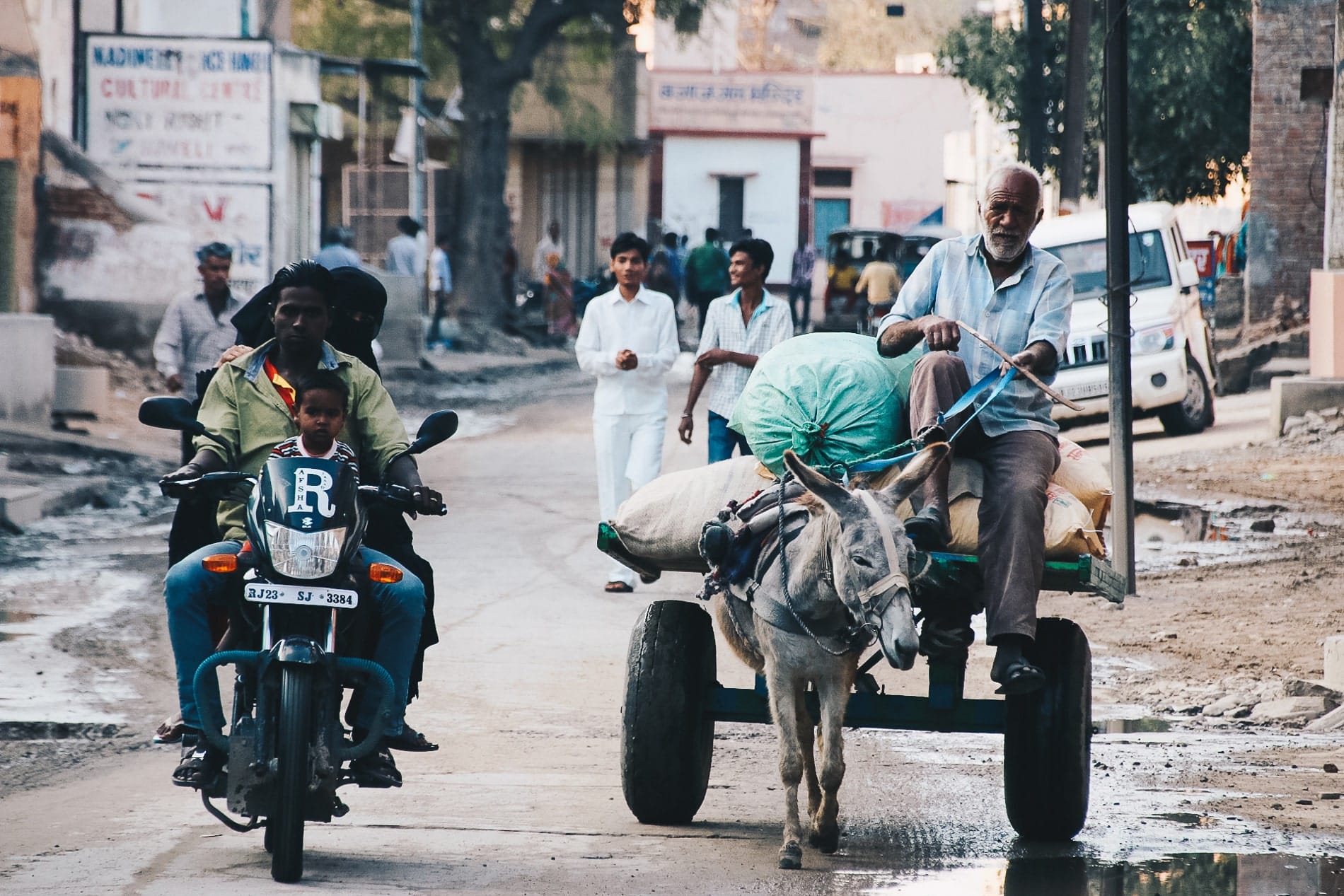
-
INDIAN ROADS
The Indian roads are a curiosity in themselves, as are their magnificent and tastefully decorated trucks. But it’s best to have your own driver, as there are no traffic regulations. Here is anarchy!
Cars going the wrong way, cows, goats, pigs, wild dromedaries, tractors, overloaded trucks, bicycles, tuktuk, donkey-drawn carts and, of course, motorcycles with up to 4 people on them – all rubbing shoulders, living together, mingling to the sound of horns on roads that are often in poor condition. Don’t be surprised if you see cars stopped or motorcycles being repaired in the middle of the road. Yes, yes, we do a bit of everything here!
| NEGATIVE ASPECTS OF RAJASTHAN
-
CULTURAL VISITS
“Rajasthan is home to a wealth of cultural sites. Your trip may seem long if that’s all you do, especially if you’re not a history buff. you may feel bored! So choose the most emblematic or unique sites and mix with cultural activities such as astrology, yoga, cinema, zip-lining, etc… Your trip to Rajasthan should be a good mix of culture and experience for a first-timer.
-
CLEANLINESS
Inevitably, the dirt in the streets left its mark on us, but I can assure you that after more than a month in this country, I hardly ever saw it anymore! India is undoubtedly one of the dirtiest countries in the world: sewage systems are open to the streets, sometimes giving rise to nauseating odours. Indians have no conscience about waste management, and the rule is to throw everything in the street, even if there’s a garbage can 2 meters away. Cows in India chew very little grass, but a lot of cardboard and paper. On some superb tourist sites, you may find garbage scattered around or locals cooking on the stones, and that’s a real shame! Sometimes it even spoiled the fun!
Let’s not talk about the famous Ganges, India’s most sacred river, where the bodies of the dead are dumped. However, the locals and their cows drink the water, come to bathe, wash and clean their clothes… it’s such a paradox! Not so easy to understand!
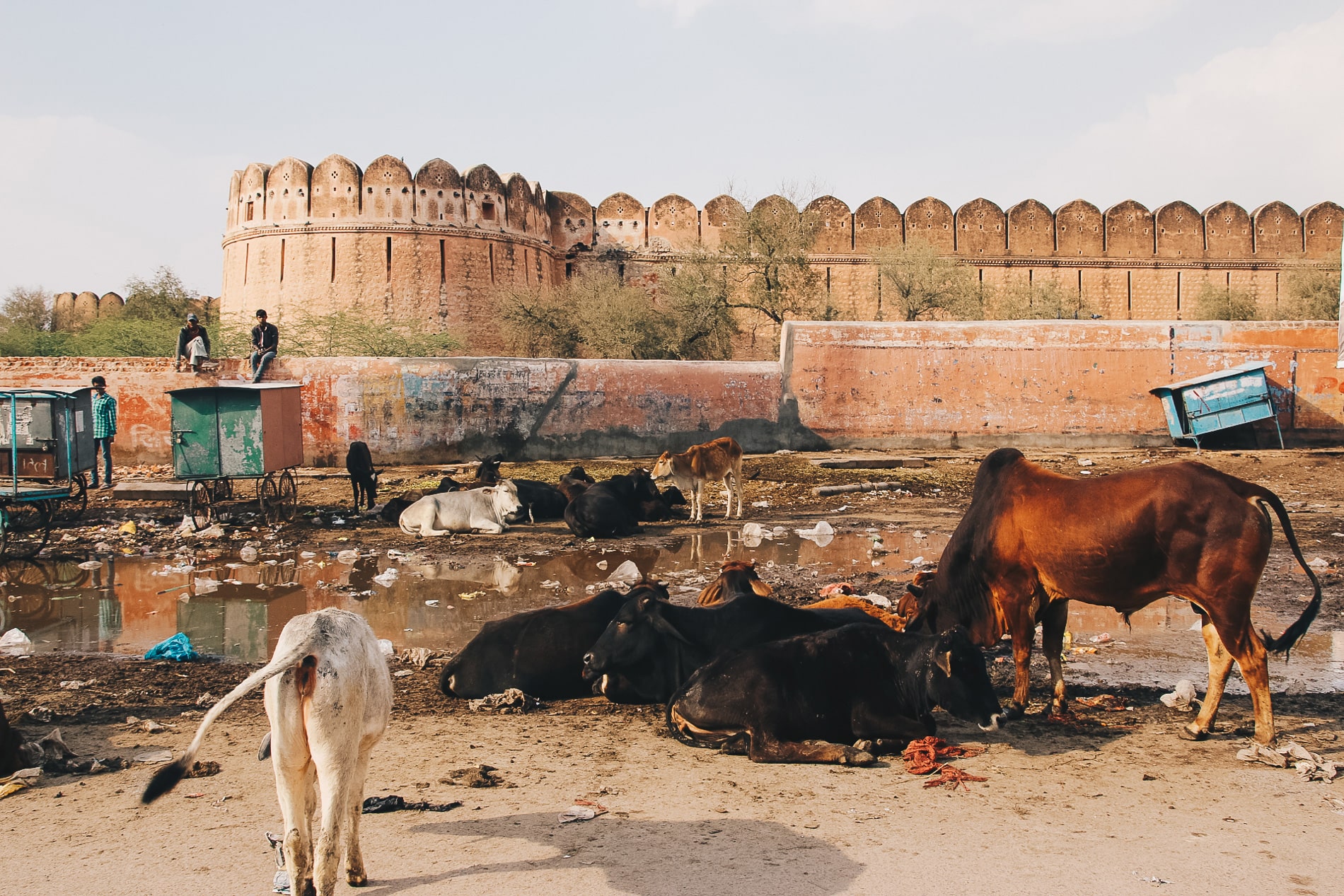
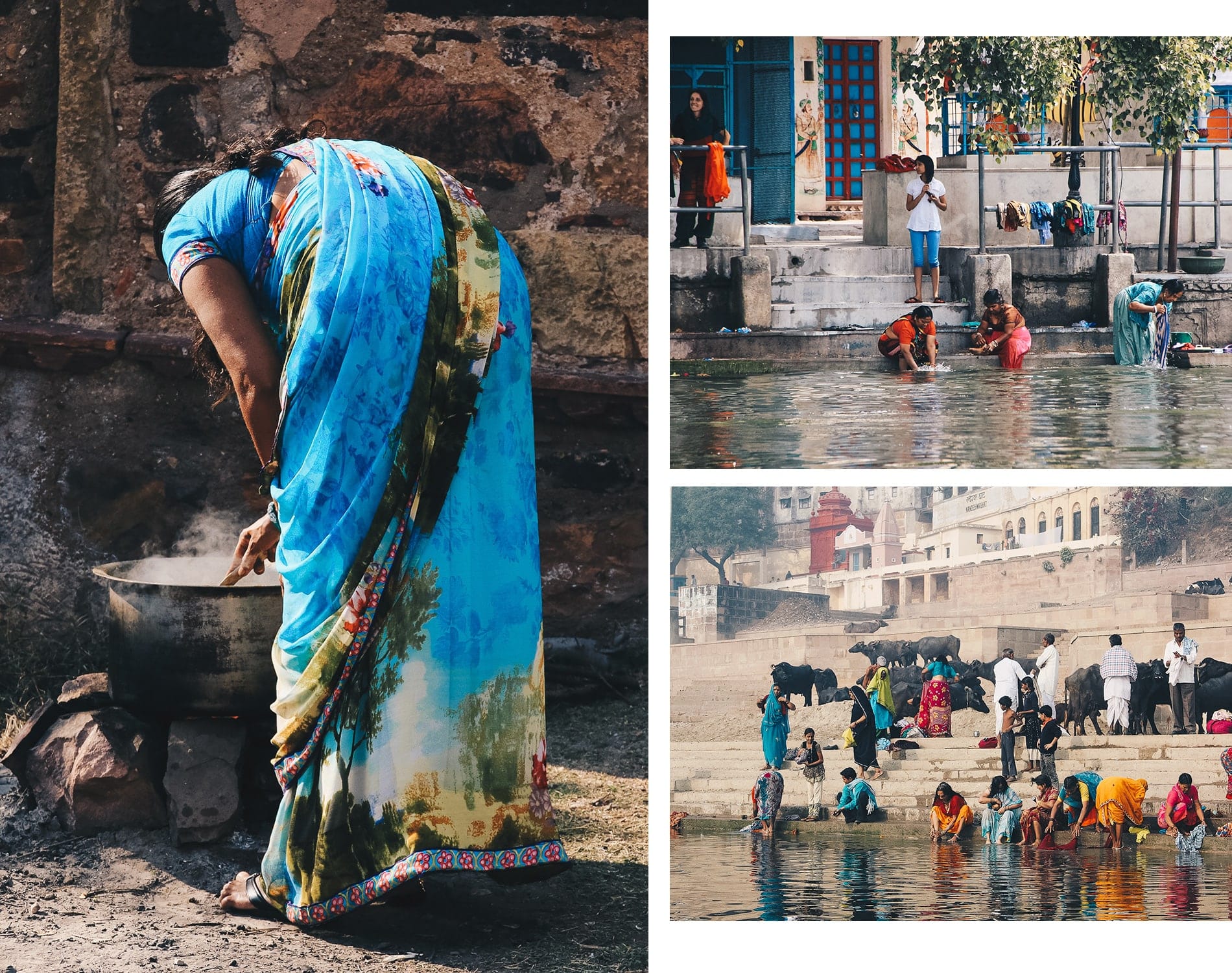
-
TOO MUCH INDIAN FOOD
The food in India is very good, but you can get tired of eating the same thing for lunch and dinner (roasts/chapatis accompanied by small dishes in sauce). Our secret to not getting bored was to eat Indian food at lunchtime and fruit in the evening. You can find them on every street corner!
-
THE HUMAN GAZE AND SAVOIR VIVRE
The relationship between men and women was complicated for me in India. Fortunately, we were always supervised by friendly local guides. The men’s gaze was sometimes very insistent, heavy and uncomfortable. I felt visually assaulted and the few times I rebelled, it was frowned upon. Here, a woman doesn’t answer a man. In fact, they’re often uncomfortable when confronted with our extreme reactions, because they’re not used to them. I remember our driver in Kerala taking care of us. One day, over a matter of photos, he kindly put me in my place by forcing me to stay in the car as I had no right as a woman to go outside… I was so stupid in front of him!
The place of women is really strange in this society. Girls are brought up with the idea that their duty is to serve and please men. Indian women suffer discrimination and see their freedoms infringed on a daily basis. They are often abused and suffer at home, but are increasingly beginning to rebel (for the record, in this very violent country, 2 million women are murdered every year).
Indeed, associations have sprung up to support them and help them defend themselves. They learn to use sticks to kick if they need to and no longer let themselves be kicked. When they are indisposed, they are considered impure, so they must sleep on the floor away from their husbands… For the record, we had to stop at a convenience store to buy sanitary towels. It took us a while to find them, simply because they were hidden behind sacks of rice. When I arrived at the checkout counter, the salesman wrapped the towels in 2 different kinds of paper so that they would remain invisible to everyone in my plastic bag.
As for white women, they’re synonymous with easy girls, so you can quickly find yourself surrounded by a dozen men who want to take a photo with you or touch you. The first time, you agree and smile, after more than three solicitations, you continue to smile, but when it’s every day: YOU’RE SICK OF IT! I was photographed without any discretion, even in museums. In my experience, Rajasthan is not a destination I would do alone! I think that as a woman, this is a country that doesn’t inspire confidence in me (alone) because there are still risks of being mugged on a street corner!
Concerning the savoir vivre, it is very common to see men and women burping, blowing their noses and spitting all over the place next to you all day long! Some Indians seemed dirty to me, they can “piss” without embarrassment in the street and “shit” in parks (excuse me for the brutality of the words) but yes we saw that in Agra! Without any hang-ups, the men all squat together to relieve themselves in full view of the world.
-
THE CASTE SYSTEM AND FAMILY LIFE
Indian society is ultra-hierarchical. Castes are divisions of societies into hereditary groups. At the top are the elite, followed by the King and the army, banks and property, civil servants and peasants, and finally the precarious and marginalized. As you’ll have gathered, people only mix and marry if they belong to the same caste.
Although the caste system is said to have been abolished, it continues to play a major role in contemporary Indian society: 80% of marriages are still arranged in India, and the castes don’t really mix. For example, our guide in Kerala married a woman he only found out about on the big day. She was chosen by his family, who launched a sort of recruitment process based on the astrological sign most compatible with the son. It’s something that threw us for a loop because it still exists!
The generations (grandparents, parents, children, pets…) live together under the same roof, with no privacy. To tell the truth, we don’t mind, as we’ve already seen it in many Asian countries, such as Japan. You’ll never see couples embracing or kissing in the street. You don’t hold hands and show your love in front of family and friends, simply because you have to be married to do so.
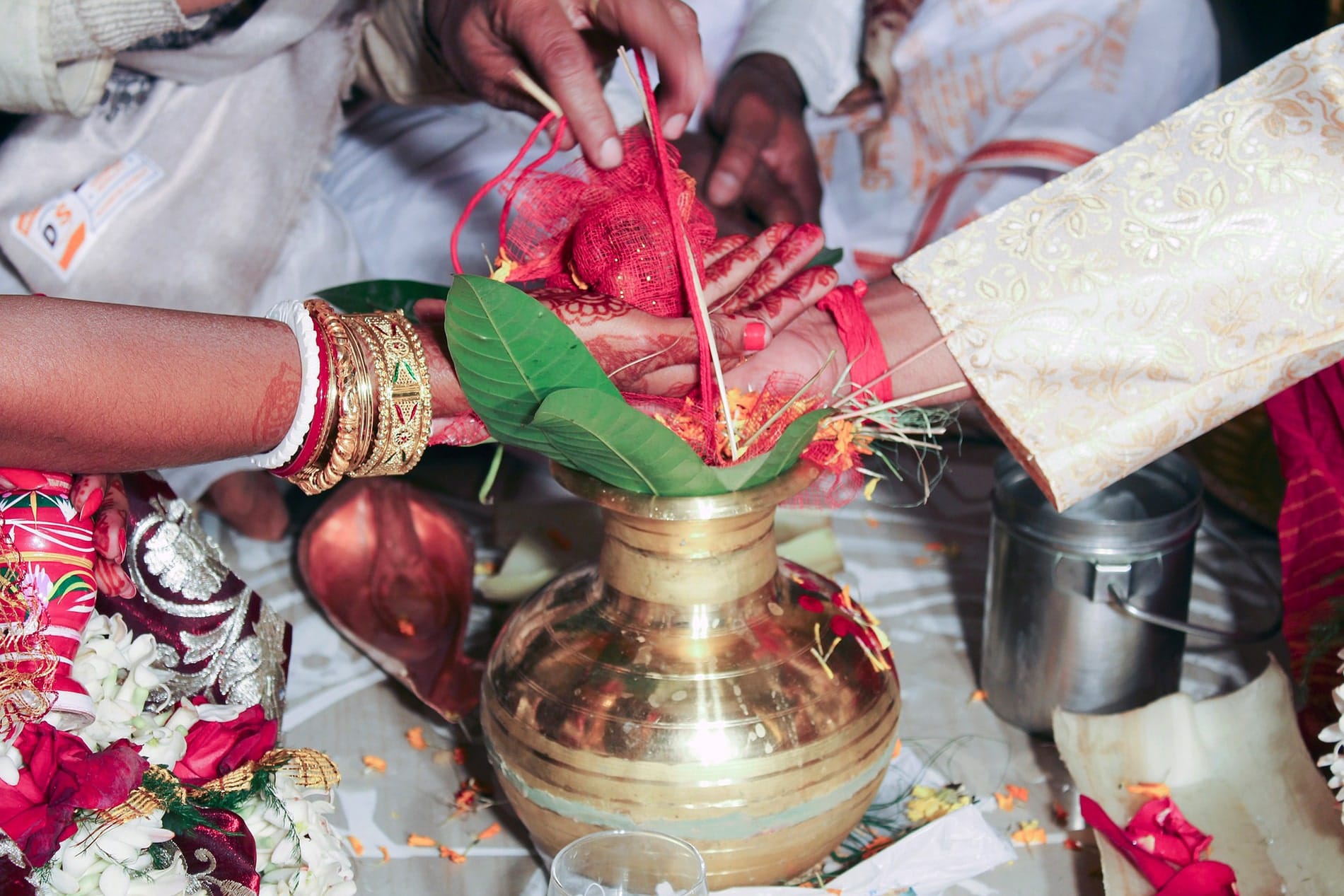
-
“TOURISTS” = WALLETS ON LEGS
If we compare India to other countries, Indians are not thieves, but I would say that some are kings of the con game. Let’s face it, you’re a bit of a wallet on legs, and we’ve felt it particularly keenly in this country. You pay for everything! You feel like you’re always giving 10 rupees here or 50 rupees there, but don’t forget too that EVERYTHING MUST BE NEGOTIATED! Even your food shopping, as we have been known to pay 3 times the local price for 2 bananas and 2 pomegranates! Don’t forget to negotiate with a smile whenever possible.
Photography can also be sold for money. The locals are well aware that foreigners don’t give money as easily as they used to, so they’ll happily pose in front of you but ask you for a few rupees afterwards for having their picture taken. In the end, everyone’s happy!
I remember a very nice little granny in Jaipur who struck up a conversation with me. I was starting to get attached to her when she suddenly asked me for money! Refusing, because I thought we were just chatting, she started insulting me in her language and pointing her finger at me! Great first meeting in this country! I thought to myself, “Some locals only come to talk to you for your money!”
Don’t forget to ask for permission before taking your photo: it’s the least polite thing to do, and it allows you to start a discussion with the locals.
Indians love to chat with you, but really out of curiosity and sympathy. They’re very good shopkeepers, and most of them are adorable, smiling and kind. But don’t be fooled by the advice of a passer-by! Be wary of what you are shown or told in the streets, and don’t be taken in. It’s always a good idea to ask around to find out who’s telling the truth!
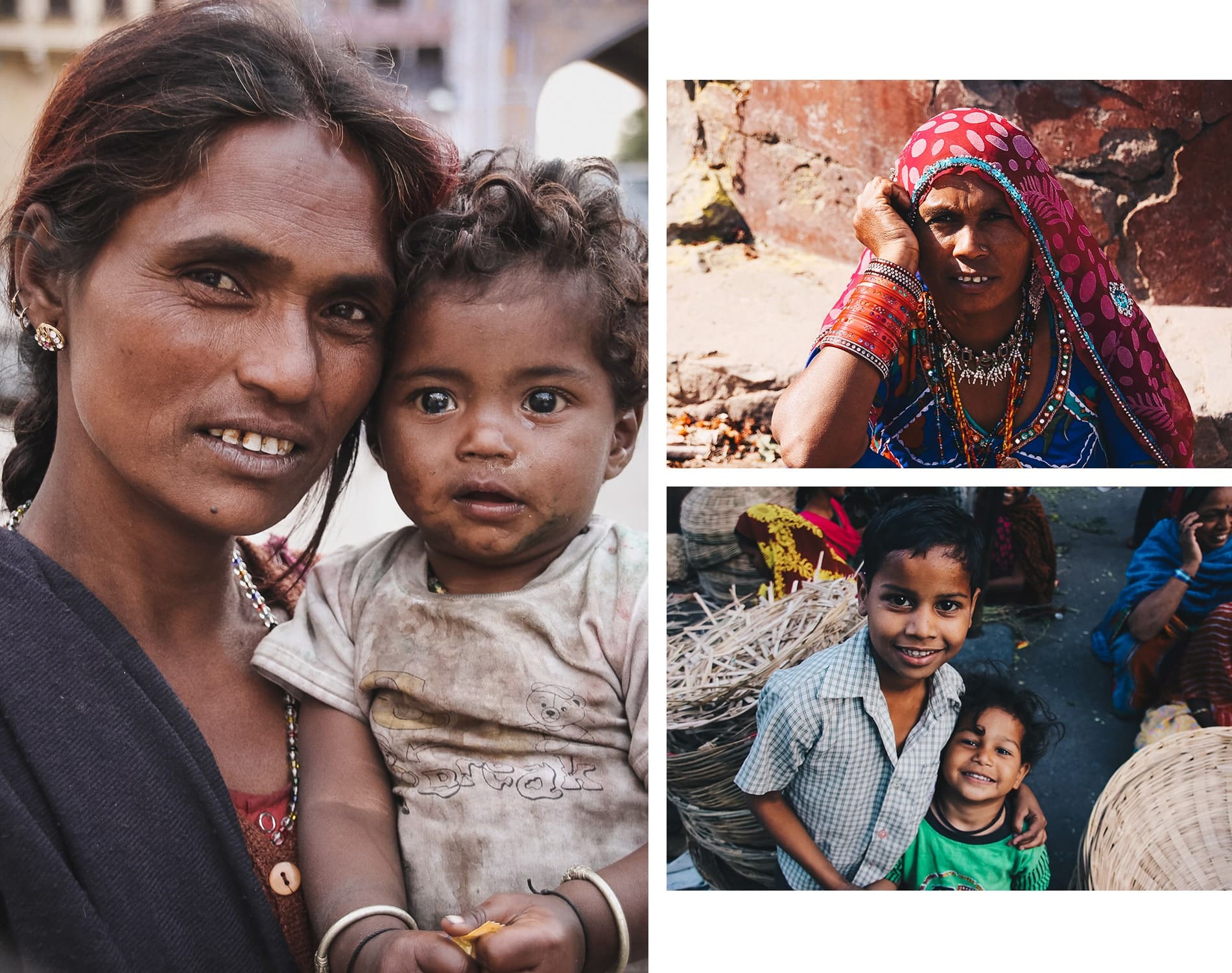
-
POVERTY
I think we’re all more or less sensitive to poverty. You should know that 1/3 of the population lives below the poverty line, but the situation is improving and should evolve in the near future. India has a large number of poor people for sure (600 million people are malnourished), but it is set to be one of the fastest-growing economies in 2020, and poverty is falling.
Our first days in India were difficult on this subject, because you can’t remain insensitive to a mother and her baby begging you for money to eat! As a result, you give! The problem is, like everywhere else, you encourage them to keep going! But what to do in the face of such misery and reality?
To be honest, even if our guide didn’t want us to, we still managed on several occasions either to buy food for the beggars or to share our meal.
| INDIA SYNDROME
But what exactly is that India syndrome that can send Western travellers over the edge into madness? It’s very simple: it’s culture shock as soon as you arrive, and travellers go crazy! India is often portrayed as a rich, developed country with its own culture, traditions and people, but this doesn’t really correspond to reality. Right from the start, you’ll be confronted with extreme poverty and misery, but also very difficult living conditions and sometimes death – a big difference from our Western world.
This Indian syndrome manifests itself in various ways: inexplicable anxiety and sadness, panic attacks, hallucinations, paranoia, psychotic delusions… You begin to reject India, its culture and living conditions. We’ve never experienced it, but from what I’ve heard, the first symptoms of varying degrees of alarm can occur, starting with misplacing money and belongings, then forgetting one’s name and identity. It may sound crazy and unlikely, but I assure you that this syndrome does exist! Travelers enter a form of wandering.
What’s disturbing, but reassuring, is that as soon as travelers find a strong symbol of their culture or consult a French doctor, they regain their footing and return to reality. It’s a psychological balance they need to regain to feel better. But this shock can also be positive, and you’ll be fascinated by the country and all its discoveries.
I invite you to buy and read the book by Régis Airault, entitled “Fous de L’Inde ». This former psychiatrist recalls various cases of the Indian syndrome he witnessed while living in Bombay. He tells the story of a young girl who ran through the streets of the Indian capital to kiss cows during religious events, or the case of a woman who almost drowned when she tried to swim to her parents in France!
Finally, if it’s any consolation, there’s also Japanese blues in Paris. They think they’ll find an ideal of refinement in France, and imagine Paris as a civilized paradise to such an extent that they become shocked, depressed and even persecuted. French communication codes are very different from theirs (saying no, saying what you think, shoving, shouting at someone….), hence this major culture shock.
IN CONCLUSION
To conclude on our impressions, we shouldn’t try to revolutionize and change India, we should accept it as it is, with its faults, its codes and its complexities, but also its many qualities. There’s no point in trying to understand the whys and wherefores and exhausting yourself in the face of behaviours or actions that seem mind-boggling – you’ll clearly be wasting your time and energy! We know it’s an exasperating country, but it constantly challenges and fascinates us. It’s pretty crazy!
India remains a destination that stands apart from the rest, and one that can’t leave you indifferent. Despite the negative aspects we’ve listed above, once you’ve “digested” the trip, only the colors, the culture, the women in saris, the smells and tastes will remain indelibly etched in your mind. Then you’ll certainly want to go back to see more, or see it differently. That’s the magic of India too! You’ll soon understand why this country is nicknamed Incredible India! As I write these few lines, a whole host of images, smells and sounds are coming back into my head. Today, I want to go back and experience more, as India is a journey that leaves a lasting impression.
To appreciate this country and let yourself be carried away, note that as an accredited bespoke travel designer, I offer to accompany you in the creating your customized stay in India and creating a personalized itinerary to suit your needs. Please send me an email at : contact@mademoiselle-voyage.fr
Before you leave, don’t forget to read all our other articles on Rajasthan to help you prepare for your trip:
- Our 19-day Rajasthan tour
- Where to celebrate the Holi Festival in India?
- Meet the Bengal tiger
- What to bring back as souvenirs from Rajasthan
- Our tips for preparing your trip to India
- Taste a goat’s massala at a local restaurant

